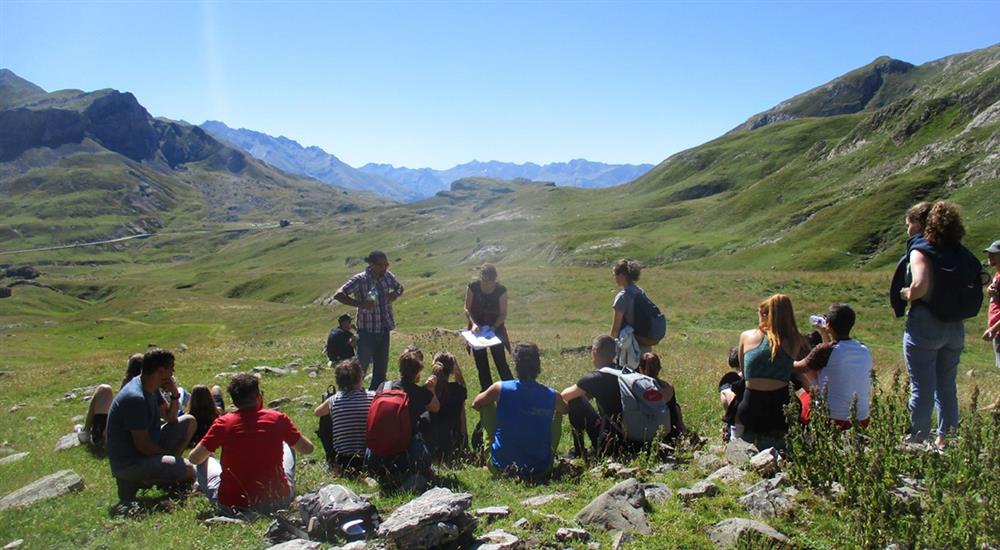On Saturday 9th July, the 23 students attending the UPPA Undergraduate Summer School from the 10 member-universities went on an ‘archaeological hike’ in the Cirque d’Anéou, on the French Pyrenees. The hike was led by Mélanie Le Couédic, Archaeologist from the research laboratory ITEM, UPPA, and by Bernard Jamorski, guide from the Service des Sports.
The magnificent Cirque d’Anéou, a vast mountain amphitheatre in the natural reserve of the Parc National des Pyrénées, shows traces of human settlements from the Bronze Age to the mid-20th century: mainly shelters built by shepherds moving to this area in the summer season with their herds. The site has been the object of archaeological digs since 2004, leading to the publication ‘Estives d’Ossau : 7000 ans de pastoralisme dans les Pyrénées’, available on open source. Mélanie and Bernard devised for us a mind-opening journey through space and time, punctuated by stops on the different sites, explained by Mélanie on the ground of the published maps. Students were also challenged to locate some of the sites by reference to the maps – sometimes not so easy as it may sound!

It was both a tangible and an intangible cultural heritage trail (using UNESCO's definition), insofar as the shepherds’ social and living practices throughout the ages were touched upon in Mélanie’s explanations, but also because we were lucky enough to hike precisely during the three early summer days of “transhumance estivale”, when herds move to the upper pastures (“les estives”), and students had the opportunity to exchange with Margot, a shepherdess who explained to them some of the local grazing practices, sometimes still very traditional: every day, for example, Margot sill hand-milks the two-hundred sheep of her flock!
The rich natural heritage of the site was highlighted by Bernard’s explanations, ranging from an overview of the many different peaks visible from our breath-taking lunch break spot, to the names and habits of bird specimen we came across.
Finally, the hike was an excellent opportunity for members of the UNITA team to informally exchange with students. We got their feedback on UNITA in general, as well as on events they took part in and on tools that could be useful to them. We also shared thoughts on possible forthcoming Cultural Heritage projects, both on already experienced tracks, such as summer/winter schools, but also developing more experimental ideas, such as the establishment of a network of UNITA Cultural Heritage villages. It is rewarding and motivating to see how enthusiastic students are, and also willing to get involved as actors in building together these experimental projects!